School Olympiad: Jedi Sword, Jet Pack and Teleport by 2035
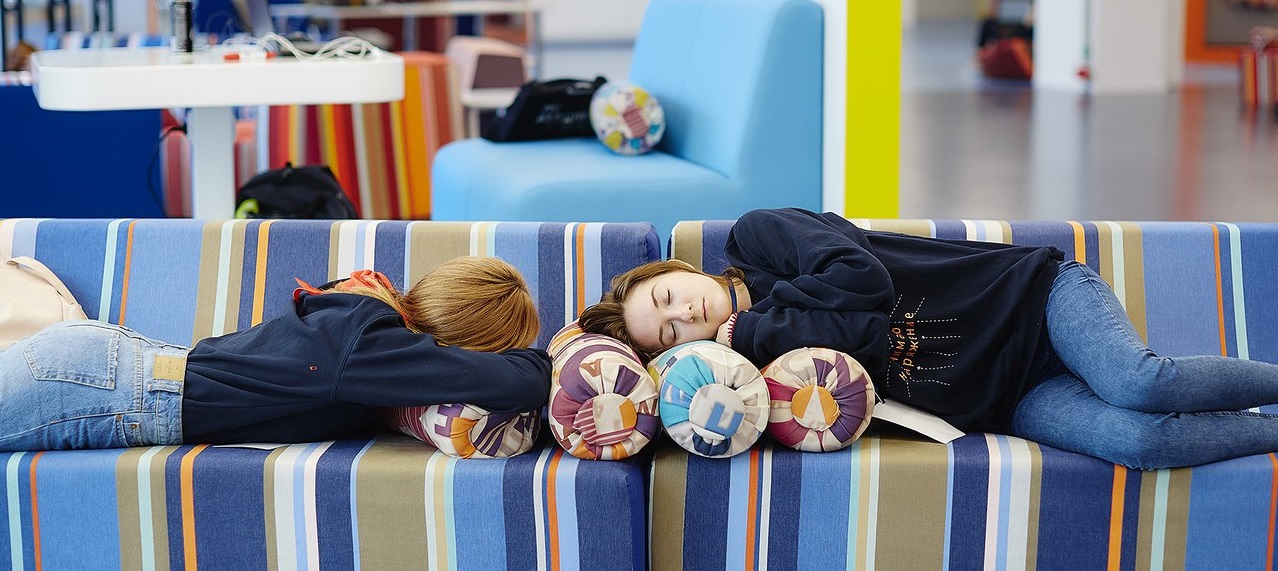
What the students say about the Olympiad:
- “It’s like the olympiad, which is written in school, only five times harder.”
- “Space is great, but metal is better. A little bit. "
- “ I am looking for a team. Grade 11. In C ++ from birth. "
- “I would like to realize the portal-cannon from Rick and Morty.”
What actually happened:
')
- Seventh graders catch muons.
- From schoolchildren ran off the fish.
- An otter settled in the pool.
- The schoolboy hacked the test stage via the IR channel.
- 7 and 9 graders won 11 graders.
- The team wrote a prediction algorithm that predicted that they would lose with this algorithm.
For a start - a couple of problems so that everything is clear from the very beginning. And then - the details.
Biology tasks for nanotechnologists
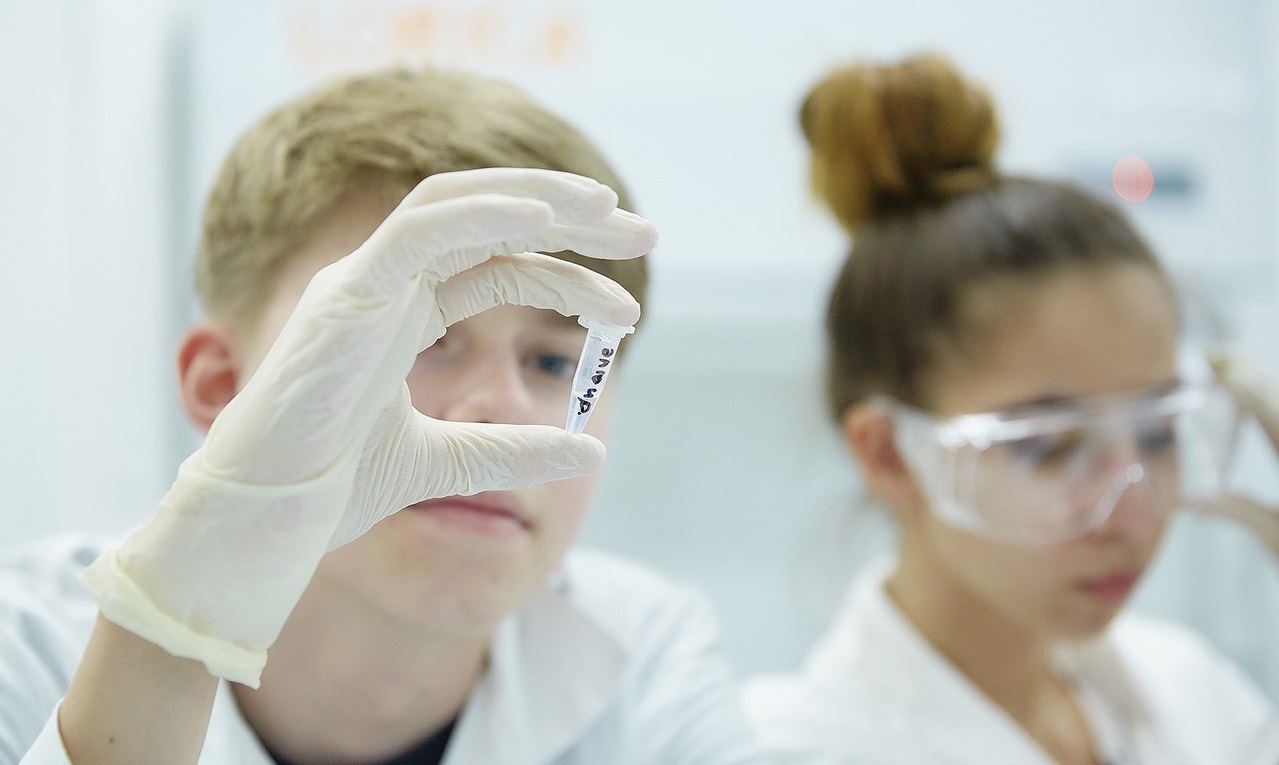
Task 2
In the distant future, exploring the neighboring galaxy, humanity was confronted with an alien race calling itself the Reifs. As a result of several contacts, the following became known. Each Rafe community is ruled by a queen, who is the only female in the community. A relatively smaller part of the community consists of men with high intelligence. Most of them are working individuals, large and muscular, capable only of carrying out orders of intellectual individuals and routine tasks.
Reliably about this race is known:
- There was only the birth of a working individual. It was a "way out" of education, called by observers a "leathery cocoon." The individual appeared somewhat smaller than the adult, and clearly more helpless, but already fully formed.
- It is known that working individuals within one community are genetically identical.
- Life expectancy of the working individual is unknown.
- The life expectancy of the queen and men is high and about the same.
- The birth of "intellectual" individuals was not observed, but there is information that they are born quite immature and have a certain analogue of human childhood.
- Sex change in adults does not happen.
- There is information about the tradition to take away the young queen (before maturation) from the community.
- Genetic features have been discovered that bring this race closer to terrestrial insects, and possibly fish.
- A. Suggest a mechanism for determining the sex of this race, the gender (genetic and phenotypic) of all individuals, the life expectancy of workers.
- B. Imagine whether a Rafe has a live birth.
- C. Suppose the Rafe community is left without a queen, but has a need for a new one. Suggest mechanisms for how they could get a kindred queen, and which individuals should have stayed with them to do this.
Justify the answers.
Task 4
Representatives of the protoss race have anthropomorphic outlines of the body, with the exception of the structure of the extremities - they have knees and four-fingered hands curved back. Skin color is greenish, bluish or gray. Protoss are bisexual, it is known that both men and women are diploid. This race is able to feed on the energy of light, but it is known that sometimes children are born with a reduced ability to perceive light. Such children without special measures rarely live to the age when they themselves create families. For the ability to assimilate the energy of light, the heterodimeric protein Stl from two subunits, S and L, is responsible, at least one is enough to maintain its operation.
You are available to archive records of one of the large million cities of protoss, dedicated to their demographics and records of inter-clan marriages.
As a result of studying the archives you know the following:
- most of the protoss in the city have gray skin, bluish and greenish color are less common, and bluish about three times less than greenish
- reduced light perception boys more often than girls
- reduced ability to light perception is rare - less than in 1% of cases.
- in those cases when a protoss with reduced light perception started a family, then, as a rule, but not always, his daughters were healthy
- From clan records it is known:
- The clan of hereditary gray-skinned protoss decided to intermarry with the hereditary green-skinned clan. According to the results of several marriages in the first generation, all children were gray-skinned. In the marriages of these protoss among themselves, about three-quarters were gray-skinned, and among the rest (not gray), about one sixteen turned out to have bluish skin.
- Another hereditary greenskin clan was intermarried with a clan with bluish skin. All the children from such marriages were greenish skin. In the marriages of these protoss among themselves, three-quarters of the children were with greenish skin and a quarter with bluish skin.
- In marriages of representatives of the gray-skinned clan with representatives of the blue-skinned clan, all children had gray skin. In the second generation, there were three-quarters of gray-skinned and equally out of those with bluish and greenish skin.
- A. Determine how protoss inherit skin color.
- B. Determine how the defect in light transmission is inherited.
- C. Why is the defect of light perception so rare among protoss?
Explain your answer.
What is going on?
Olympiad of the National Technological Initiative. The goal is to capture the galaxy by 2035. The remedy is to raise the generation of Korolev, Mendeleev, Sikorski, Vernand. How - interested schoolchildren interesting tasks.
Of the 20,000 participants in absentee rounds, 572 schoolchildren passed to the final. The first part of the finalists, 360 people, came to Sirius in Sochi, where they competed in nine areas. For the remaining eight profiles, competitions are held in March-April in seven regions of Russia - from Vladivostok to St. Petersburg.
Some details about 4 profiles (out of 9), in which directions the Olympiad took place.
Neurotechnology and development of cyborg

This year, the finalists made the control system of the bionic prosthesis of human hands. Participants assembled a prosthesis, invented and implemented a prosthesis management system based on muscle and brain activity.

The system must have a certain measure of sensitivity, which will allow the seizure of fragile objects.

The winner was the team with the most accurate control system with the minimum number of errors when performing tasks.
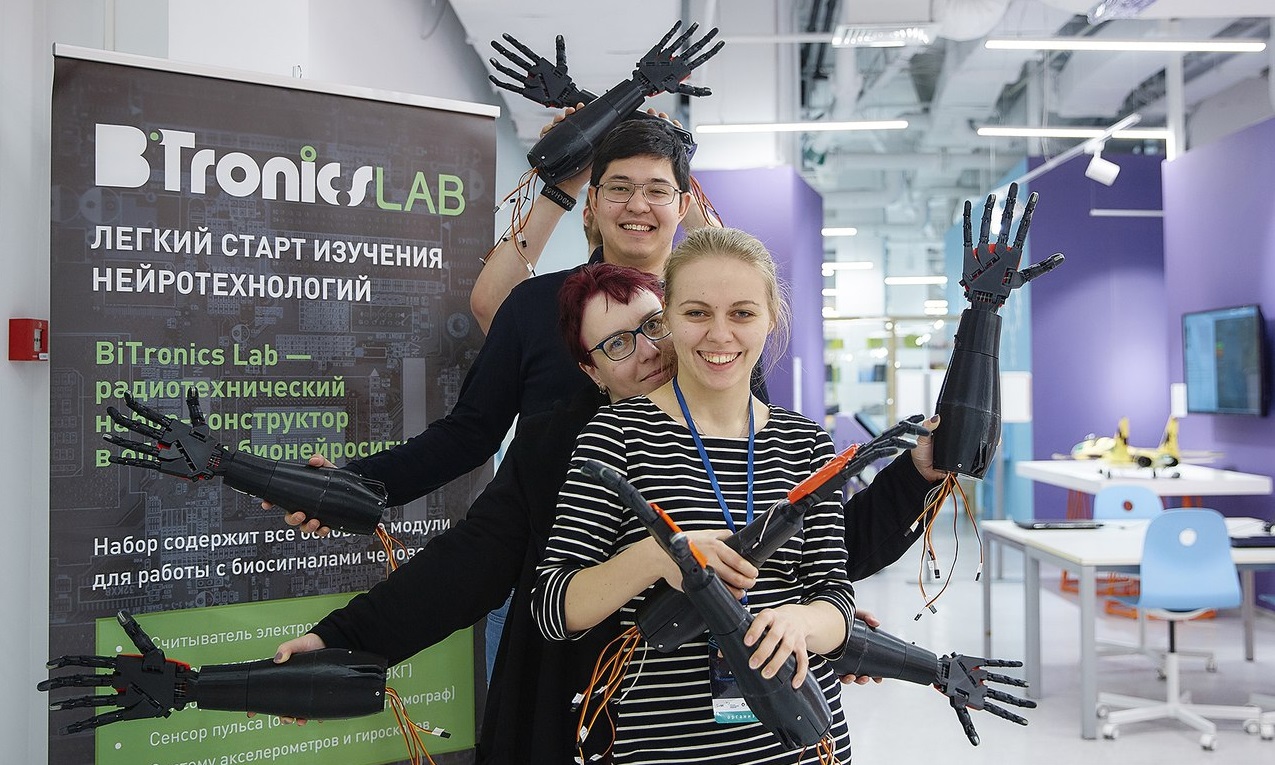
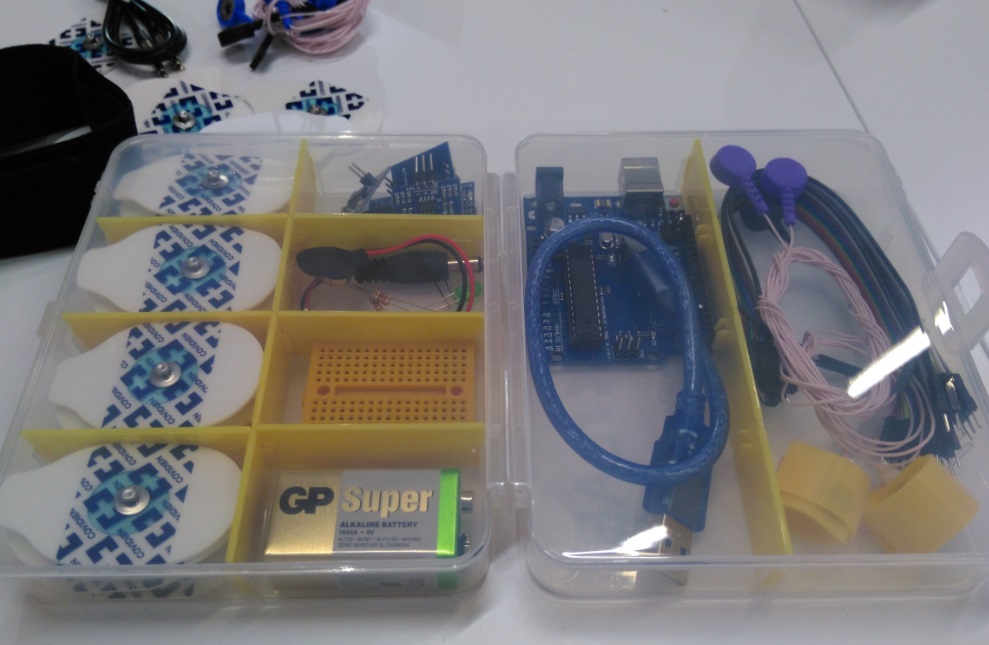
The participants had at their disposal the “Young Neuromodelist” design kits and kits for assembling a bionic prosthetic arm.
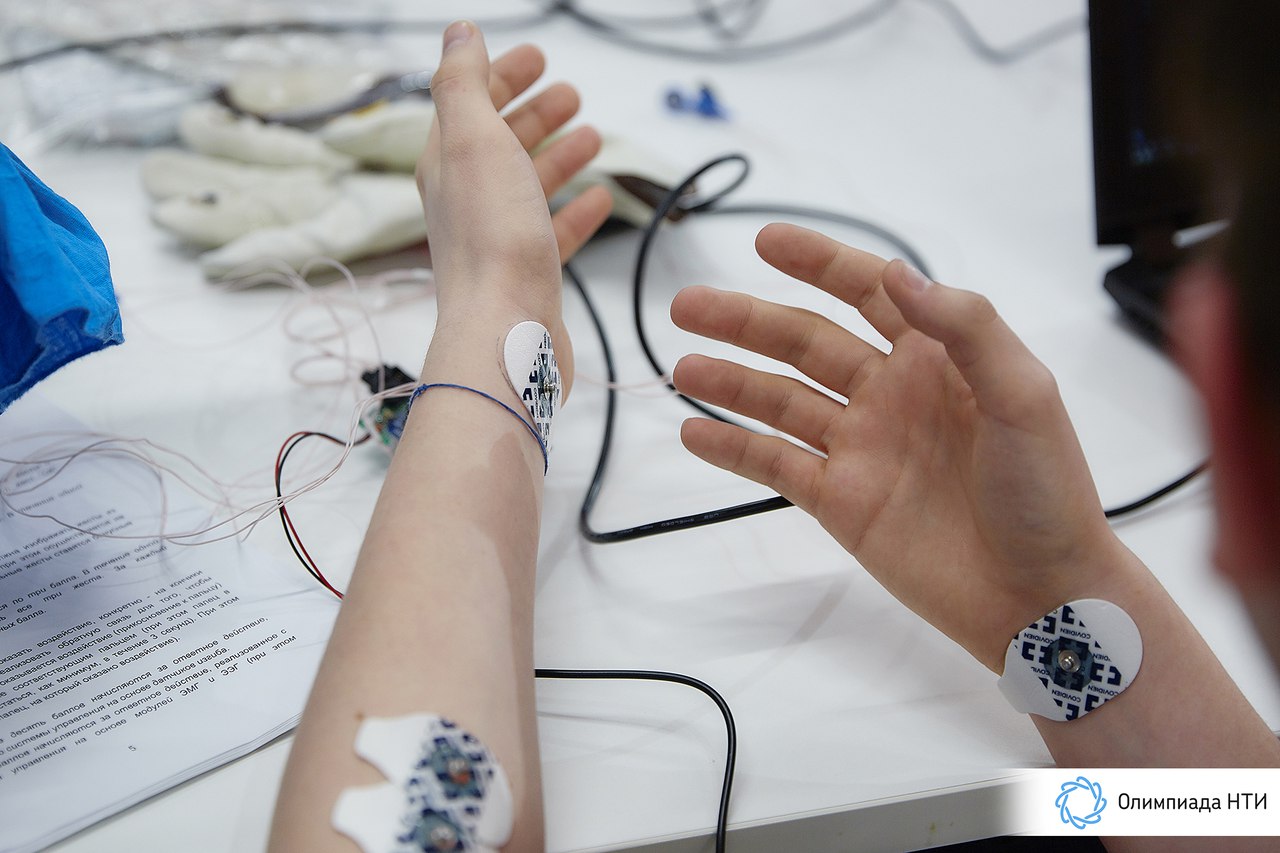
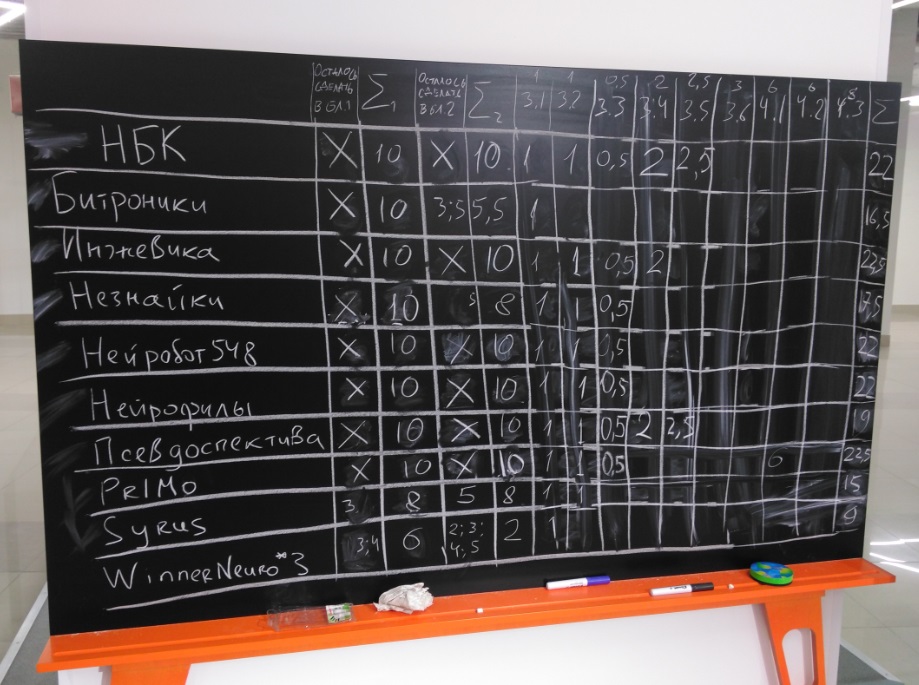
Command list
Useful materials:
- Course in biomechanics
- Biosensors course
- BiTronics Lab video tutorials
- Introductory course on Arduino
- Python programming course
- Tasks of all stages of the "Neurotechnology" profile 2017
Autonomous transport systems

“We develop a systematic understanding in the participants. It is not necessary that everyone will become engineers, but they must understand that there are systems and they are joined in very different places, that physics always catches engineering, engineering catches "soft skills" and so on. And they must feel the team, the environment that is around them. By the way, we notice that the teams do not conflict with each other, they “struggle” with the training ground, and not with each other. ”
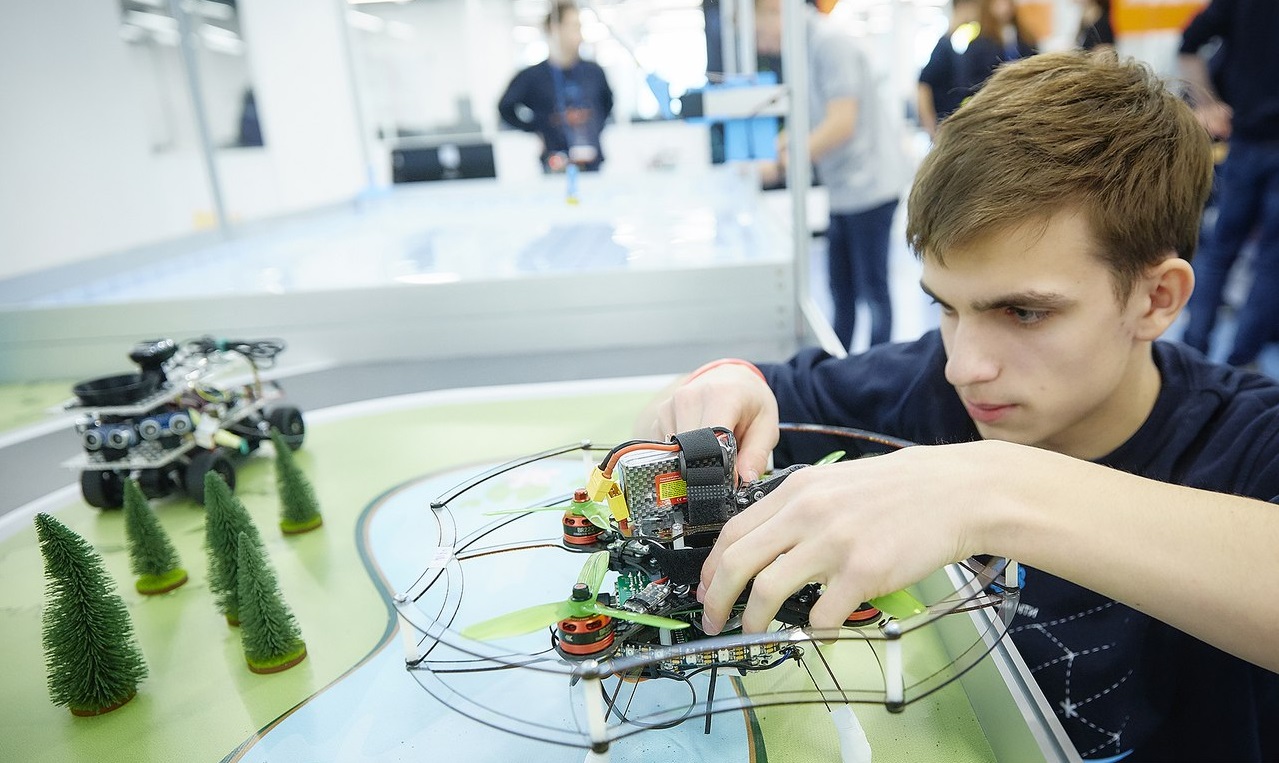
The finalist team was to:
- Design and manage elements of an autonomous transport system at a special landfill;
- Develop management programs for three types of systems: land, water, air, involved in the delivery of cargo, taking into account the features of management and logistics of each of them;

The electronic part of all systems is created on the basis of Arduino-compatible platforms.

This is the starry sky. All devices are oriented "by the stars."
For each of the three types of vehicles (TS), it is necessary to solve two tasks: global (orient the vehicle "according to the stars" and take the cargo to a specific port that fits with the next vehicle) and local (to avoid collisions with obstacles within each vehicle movement, react on the road situation, traffic lights, etc.).

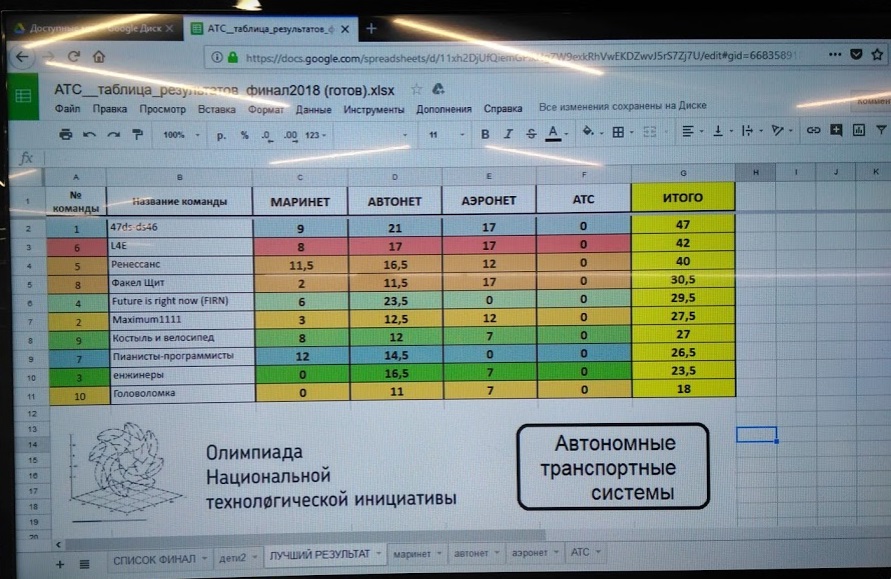
The story about "Leather Bags".

During the Olympiad, we collected the code that the schoolchildren wrote. Naturally, they were interested in, and why, and whether someone will read it. Having received the answer that the code will be read and if the complete nonsense is written there - the points will be removed, the children rushed frantically to correct the written.
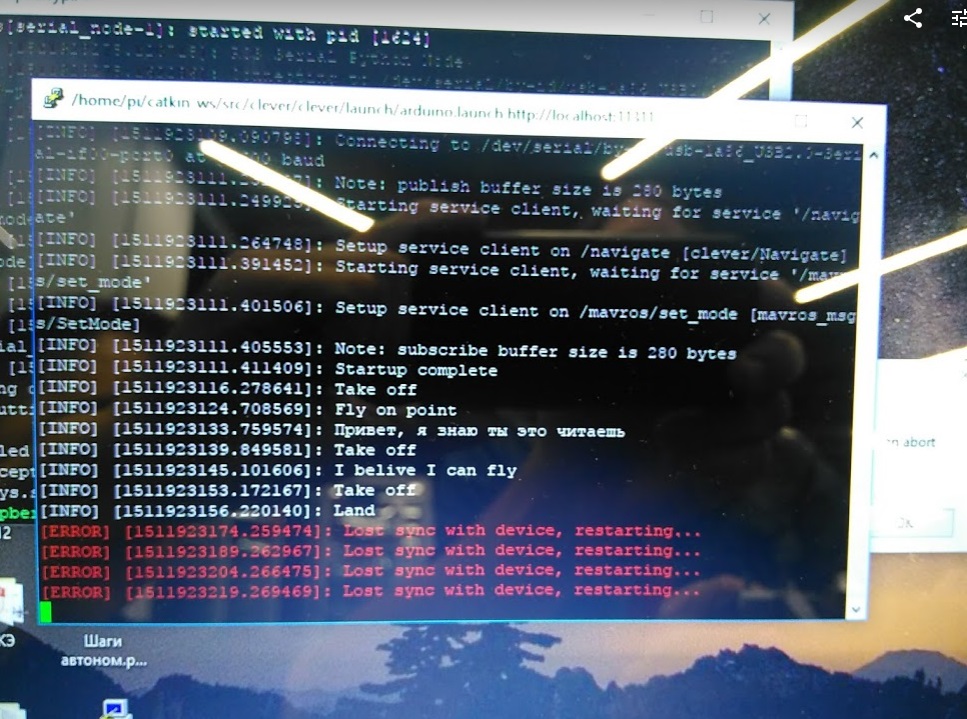
Any programmer inserts comments and debug messages clear and amusing the author of the code . In the task, where it was necessary to find a person in the image from the camera, the program issued a " Leather bastard found " among schoolchildren.
Useful materials:
- Olympiad NTI 16/17. All tasks of the profile "Autonomous transport systems"
- Olympiad NTI 15/16. All tasks of the profile "Autonomous transport systems"
- Online course "Programming in Python"
- Online course "Programming in C ++"
- Arduino video lectures
- Online course "Arduino for beginners"
- Video course "Electronics step by step"
- Hackathon profile "Autonomous transport systems" 2017
- Introduction to C ++ Programming
- We build robots from Arduino
- Hakaton profile "Autonomous transport systems" 2018
Big data

This year there was an interesting story on this profile. Medical physicist Alexandra Dalechina collected data on 900+ cancer patients of the Gamma-Knife center and data on 5000+ foci of the disease in the brain. This was never done in Russia.
The finalists, by the way, the participants of the best team, 13 and 15 years old, processed these data so that the accuracy of diagnoses increased 6-7 times.
Participants must first deal with medical terms and prescriptions, then work through a methodology for solving two problems, on survival and on remission. “If we take the average values and average deviations from the value, then the error will be around the year. Using machine learning methods, the error has decreased to 4-5 months.
Curious situations, of course, were also.
“Last year, one guy won the“ Big Data ”, and after the Olympiad he decided that he would not go to college, but would create a database for analyzing data,” says Alexey Fedoseyev. - Parents, naturally, asked not to fool around. And he showed character, quarreled with them and specially wrote the exam on 20 points. ”
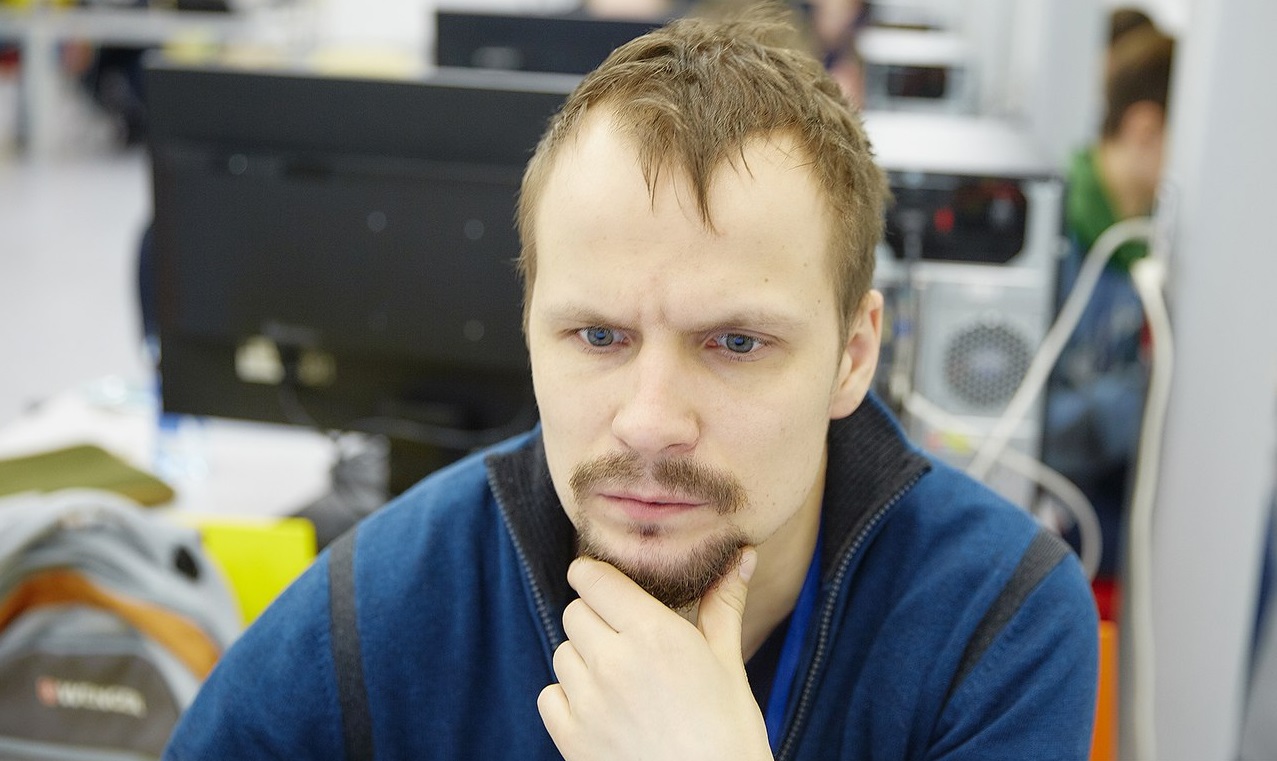
"I even have a new lecture on the Bayesian religion."
Useful materials:
Biological engineering systems
“Our team was given an unbalanced installation. It accumulated a lot of ammonia - and the fish are bad, and plants. We had to figure out how to balance it. Invented a system of "hanging", "honeycomb despair" and "glove gag". "

In the center of the story - the fish.
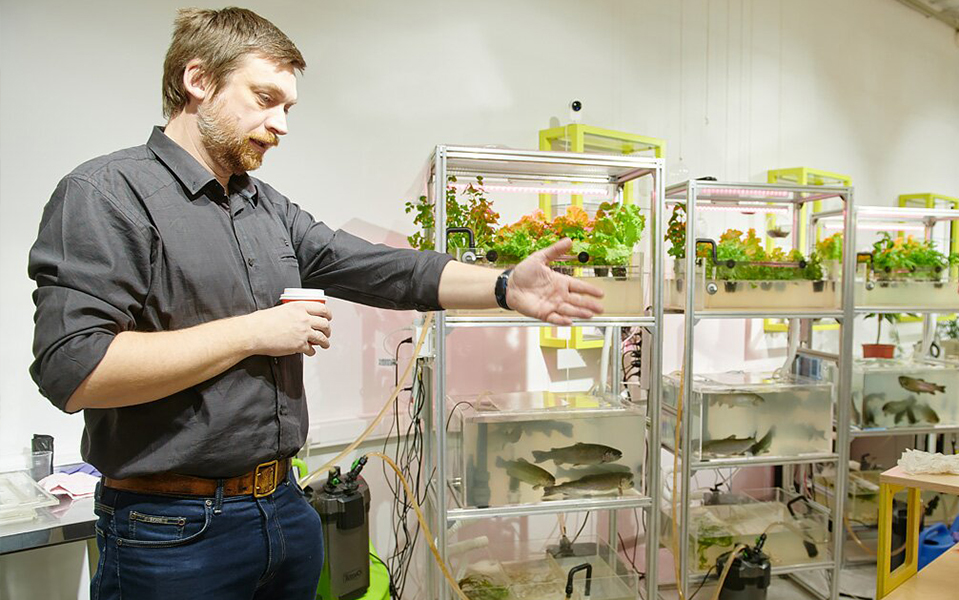
Schoolchildren were offered a system of lettuce bushes, an aquarium with trout and a drainage system. All this had to be adjusted so that the fish did not die.

- What if they die? Will the guys have grief?
“And every morning we arrive early, and if we see that the fish will soon“ throw away the hoof, ”we will catch it and replace it with a new one. But while all the fish are alive. Just ran a couple of times.
But the guards of Sirius slyly glanced at the peacefully swimming trout and waited for the end of the Olympiad ...

Schoolchildren of 9th grade performed theoretical calculations, compiled an algorithm for automating the collection of basic indicators of aquoponic systems, and automated the introduction of the necessary reagents into the plants.

For work, the launched aquapone systems with minimal configuration and a set of additional “Modules” that can be integrated into the system will be provided. Examples of "Modules":
- additional hydroponic modules;
- biological water treatment unit;
- block removal of excess organics;
- water flow diffuser;
- aerators - air diffusers (optional);
- peristaltic pumps;
- manipulator with spatial sensors.


Real engineers can easily solve problems with the help of available tools.
“The most difficult thing at the beginning of the Olympiad is to create a situation in which children will go beyond the“ teacher-student ”zone. This format, when everything that the teacher said, is true, and the child should do everything he said, we should immediately just chop it up. Because the system is open, there can be many solutions. Moreover, we can make mistakes and specifically make mistakes. And if the child is in a state of "yes master, everything that the teacher said is true," we are trying to bring him out of this state. "
Useful materials:
- 10-11 C., Mandatory course: Biotechnology and genetic engineering
- 10-11 cl.: Molecular biology. Introduction
- 10-11 cells: Molecular biology (advanced level)
- 9th class., Required material: Aquaponika, general information
- 9th class., Mandatory material: Closed biosphere
- 9th class., Required material: Closed fish-breeding facilities
- 9 Cl., Biology. General course.
- 9 cl. Biology. Advanced course.
- Tasks of all stages of the profile "Engineering biological systems" 2017
The atmosphere and atmosphere at the Olympics
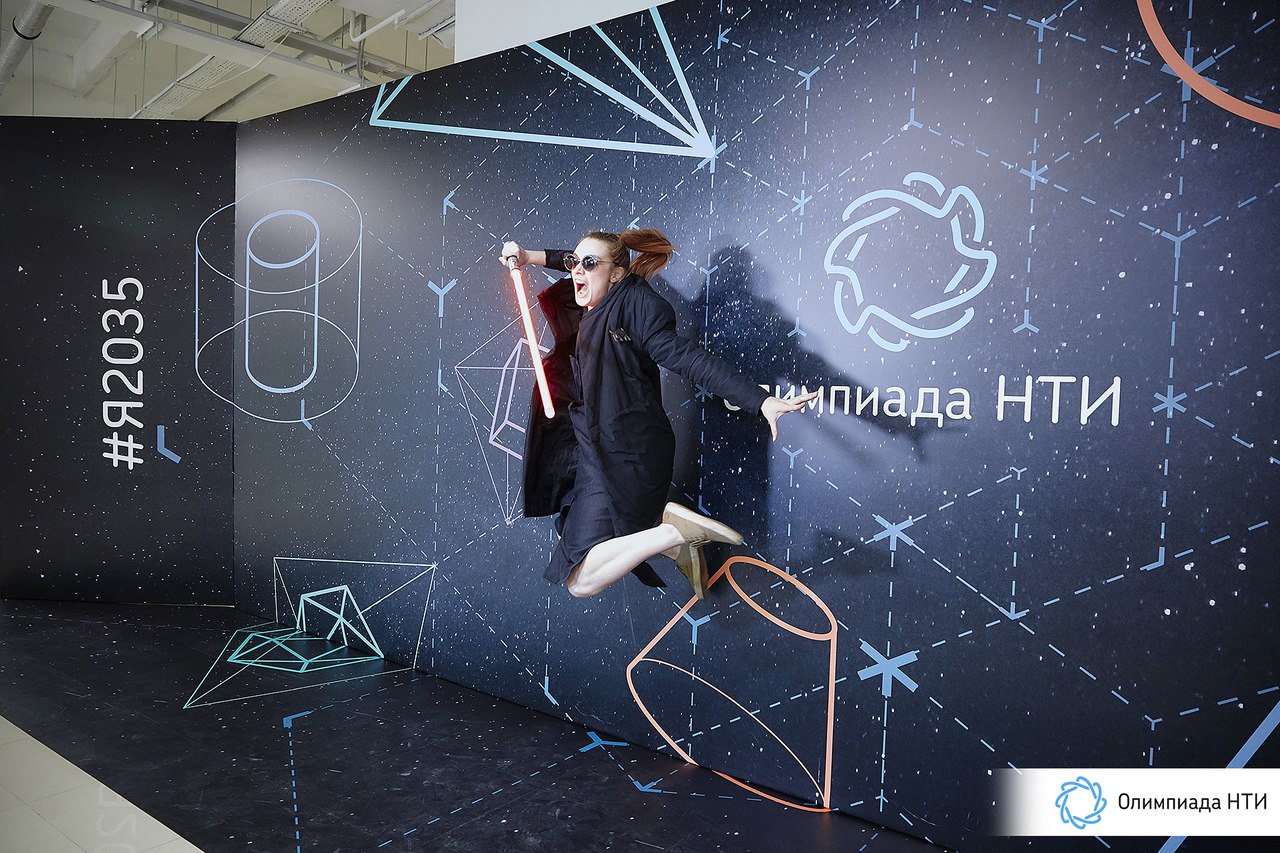
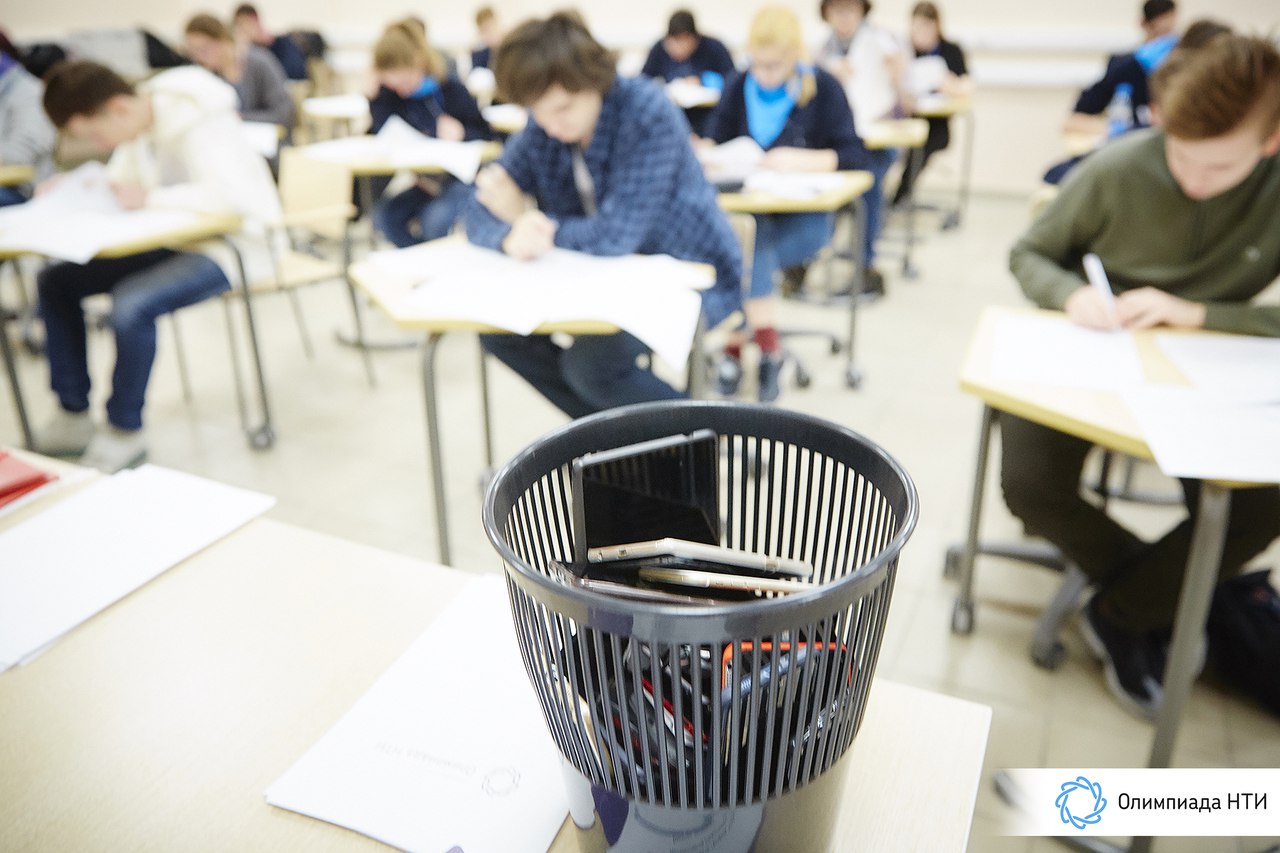
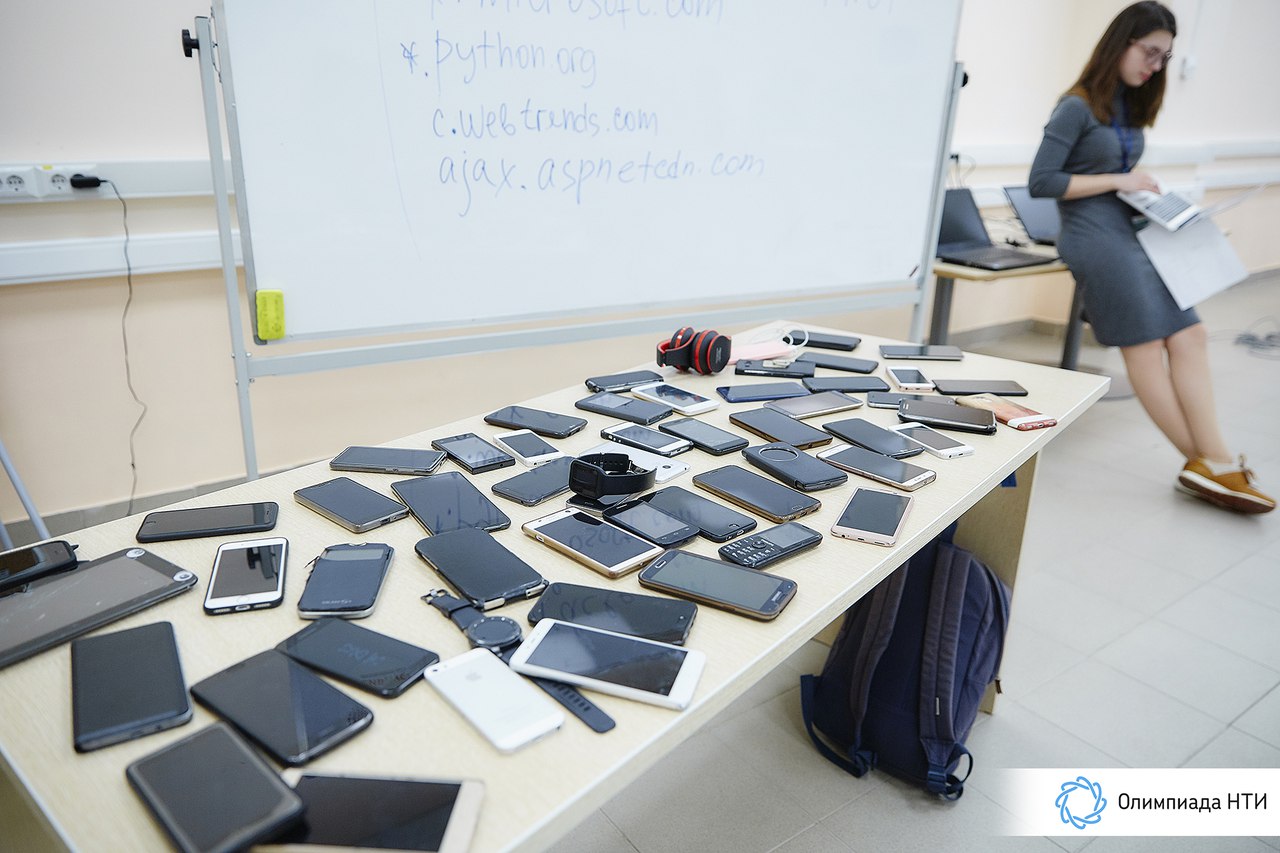
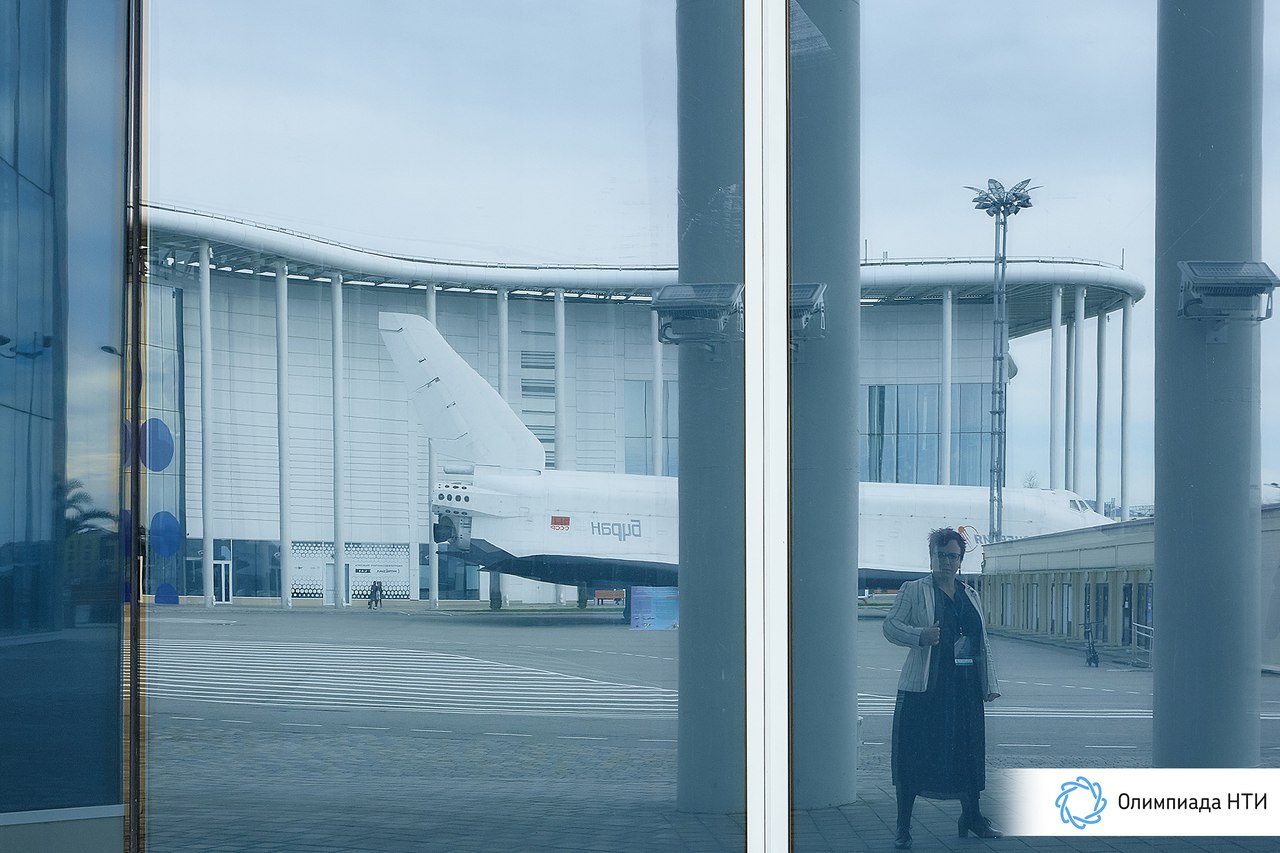



This is a Sith PR man. Olga Prudkovskaya. Kind inside.
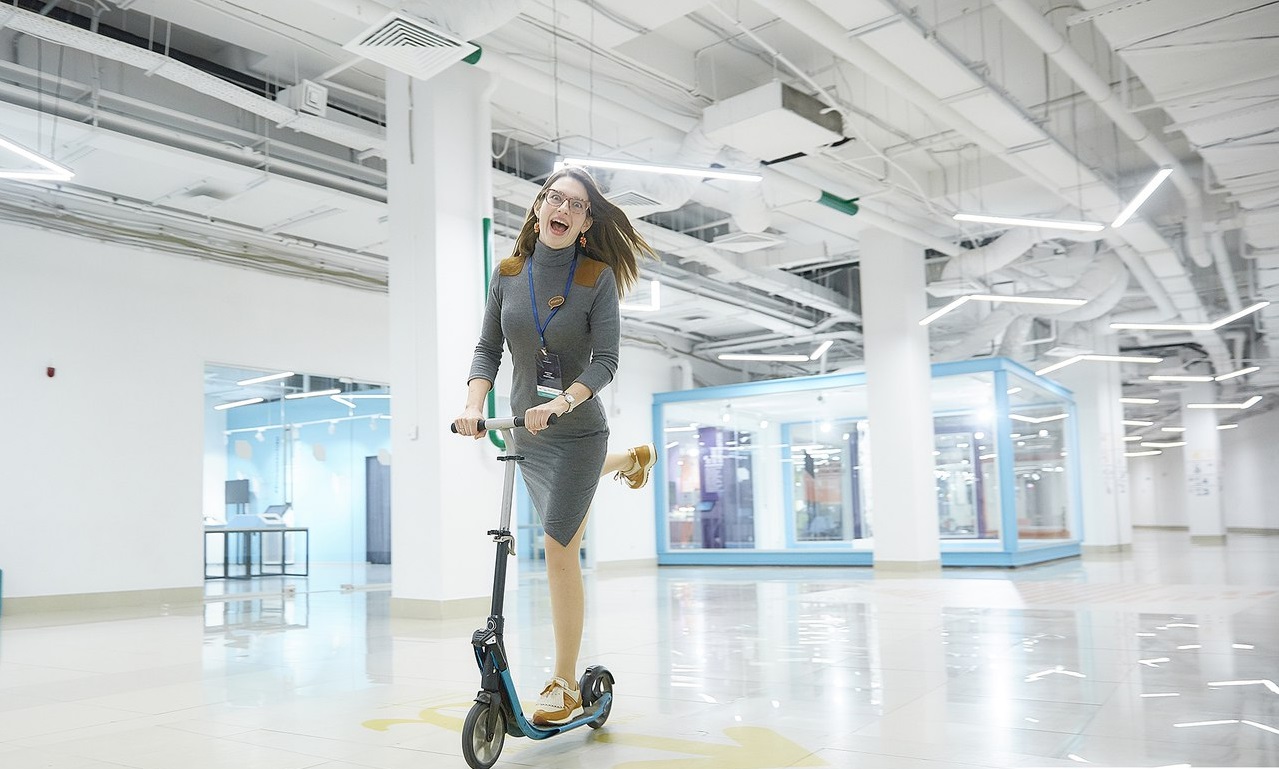
This is Olga Shabalina. It was she who burned the IR hacker.
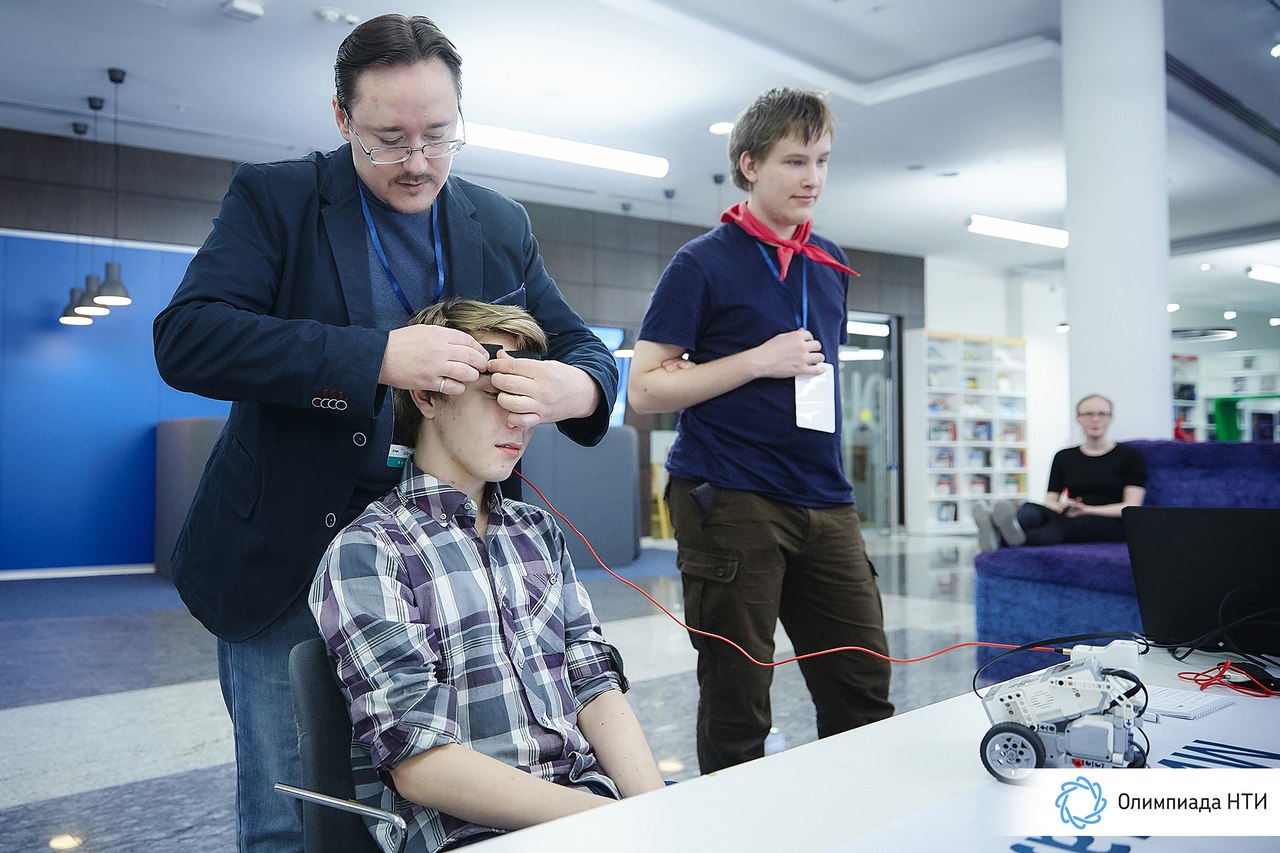
Neurorestling
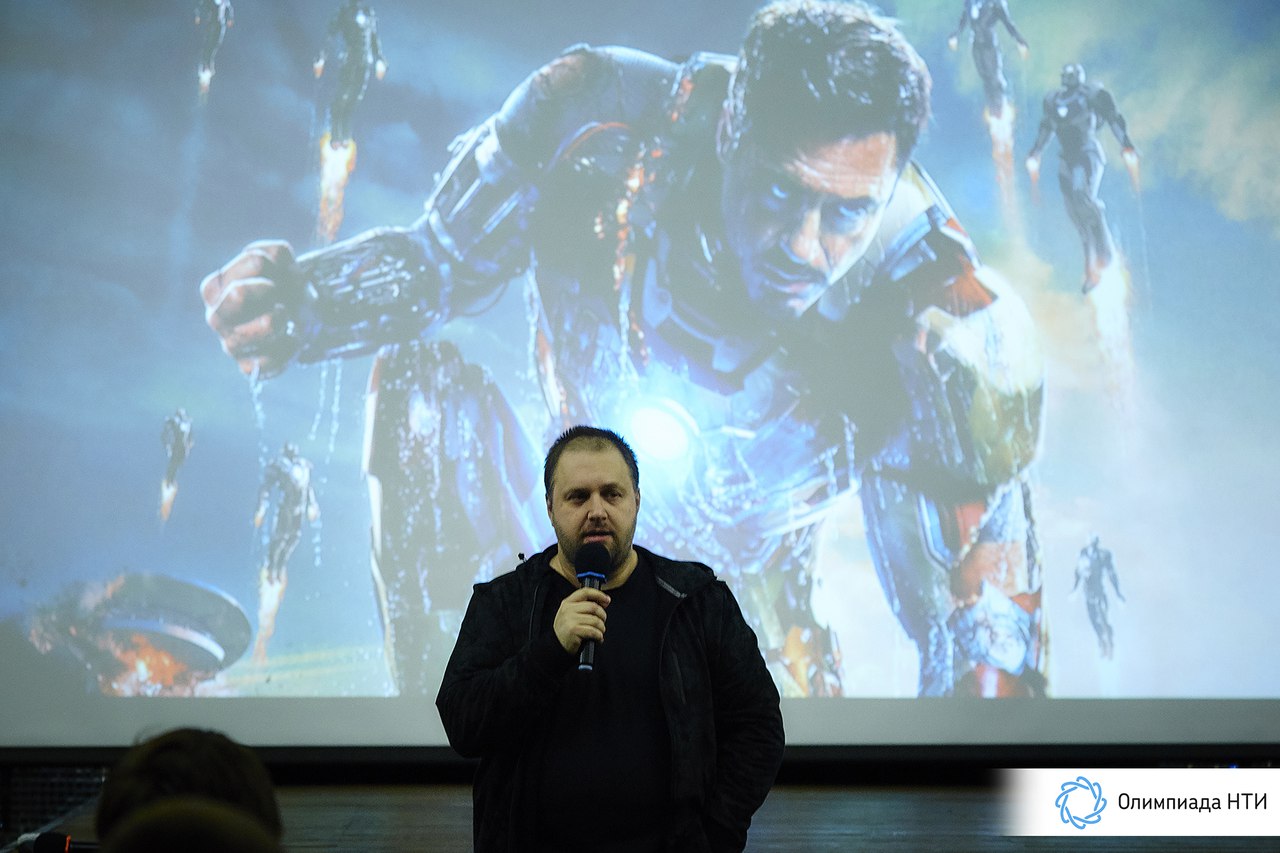
Bobuk tells
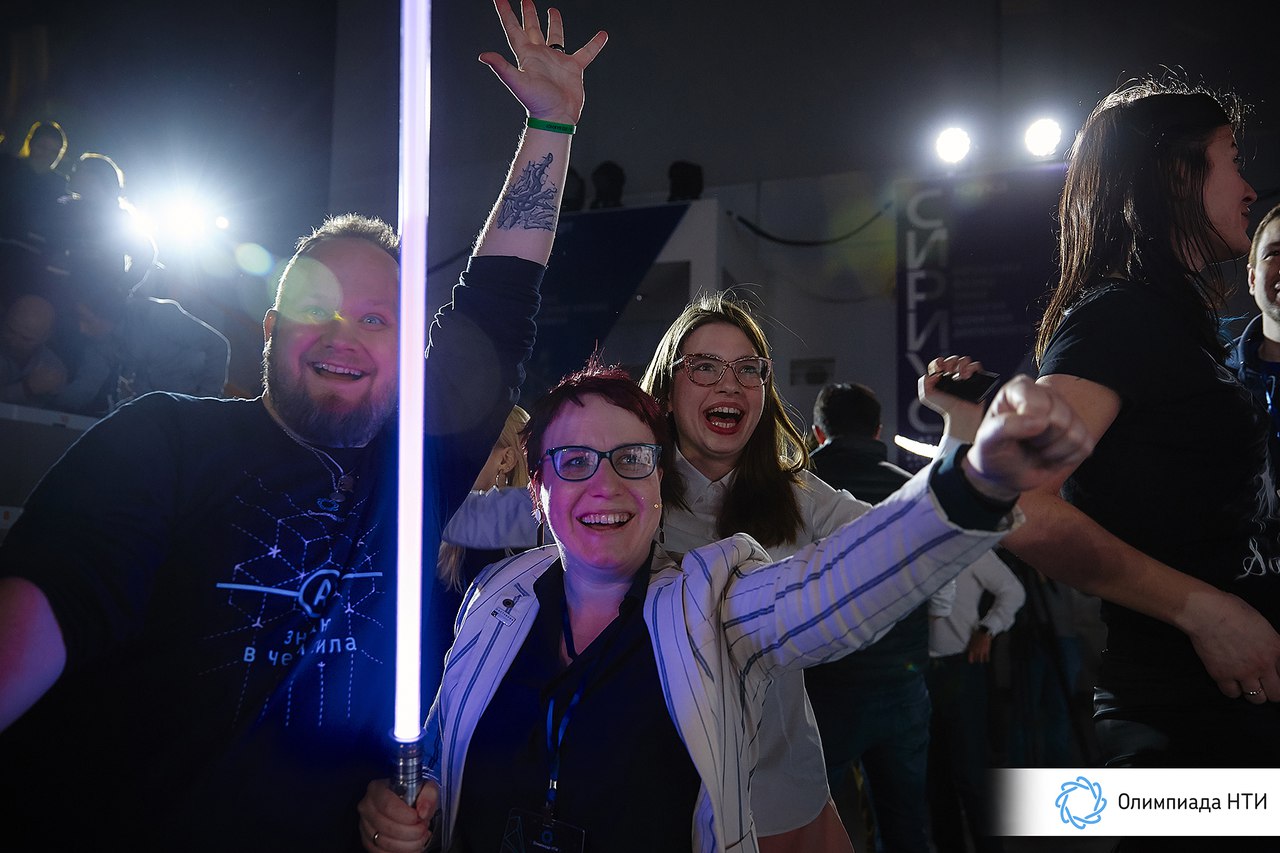
- Is it possible to make the NTI Olympiad, but without schoolchildren?
- She is. It is called "Comcon".
What the finalists dream about
Where to engage in project activities
If you are in Vladivostok, then at the FEFU Project Activity Center .
The participants of the Olympiad NTI are welcome at many hackathons, forums and schools. Ideas of where to go after the final:
March 21, 2018, Moscow - Neurofest for neurotechnology lovers.
March 25-31 GoTo Spring Design School at MARHI
March 26-30, 2018, Moscow Region - federal hackathon "League of Robots" .
Register before April 15: social entrepreneurship ideas contest - Social Impact Award.
April 6-11, Vladivostok. VR Profile Final - you can come to a master class or volunteer. Write about your desire here .
April 13-15, Moscow - VI Breakpoint Forum: hackathon, cases, startups, experts. Registration is until April 7th.
April 17-20, Tyumen. School of the Open University Skolkovo "Navigator Innovator" . Registration is until April 9th.
April 21 - May 11, Vladivostok - aviation change in the All-Russian Children's Center “Ocean” , prize winners and winners of the IRS and BAS have significant bonuses (70 and 130 points) at the competition. Submission of applications until March 23.
April 28, Vladivostok - Regional stage of the All-Russian VRO robotics Olympiad. Team registration is open until April 1st.
April 28, Vladivostok - Conference on research and design work in FEFU. Registration and correspondence stage until April 10.
May 22-25, Vladivostok. School of the Open University Skolkovo "Navigator Innovator" . Registration is until May 14.
(dates are determined, summer 2018), Artek. Aviation change from KLA. There
Already received an invitation to the best members of the profile "Unmanned
aviation systems ".
June 17-30, July 15-28, August 12-25 Summer GoTo project schools in the Moscow region.
July 1-24, Sochi - educational program "Big Challenges" in the OC "Sirius" . Submission of applications until March 31.
July 1-10, Vladivostok - “Nanograd” . Selection through contests and conference . In addition, the winners and the best team of the Nanotechnology profile are going to Nanograd.
August 7-28, Crimea - Unicvant School in Artek . Application deadline is April 27th.
(dates are determined, autumn 2018) Project change of the Circle Movement and the Fishermen of the Foundation in Orlyonok.
Reports about the Olympics in the media
- “What children do here is far ahead of school.”
- They are from the future: what is the NTI Olympiad, how to become a participant and win
- I know the power
- Olympiad NTI: turn on the sun!
- “I am a teacher to the core, and preparing for the Olympiad is an exciting experiment for me”
- NRNU MEPhI determined the winners of the STI Olympiad competition "Nuclear Technologies"
Thanks
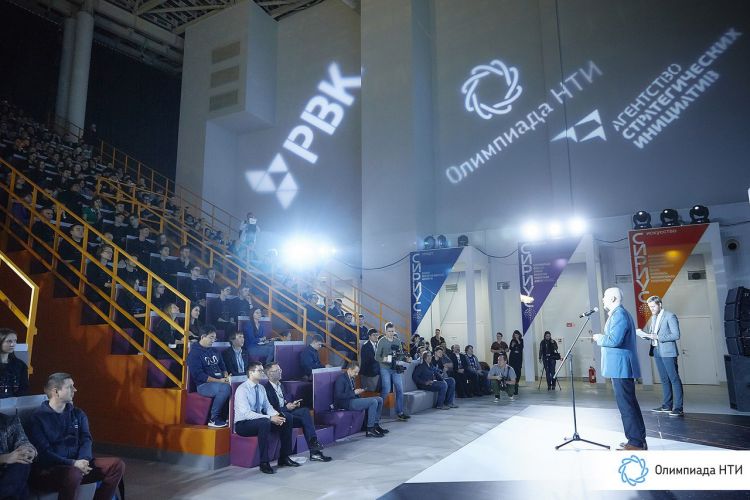
I am really grateful. Firstly, thanks to RVK and ASI for
PS
I hope next year at the NTI Olympiad to organize (underground?) Laboratory in turbojet motion and jetpacks .
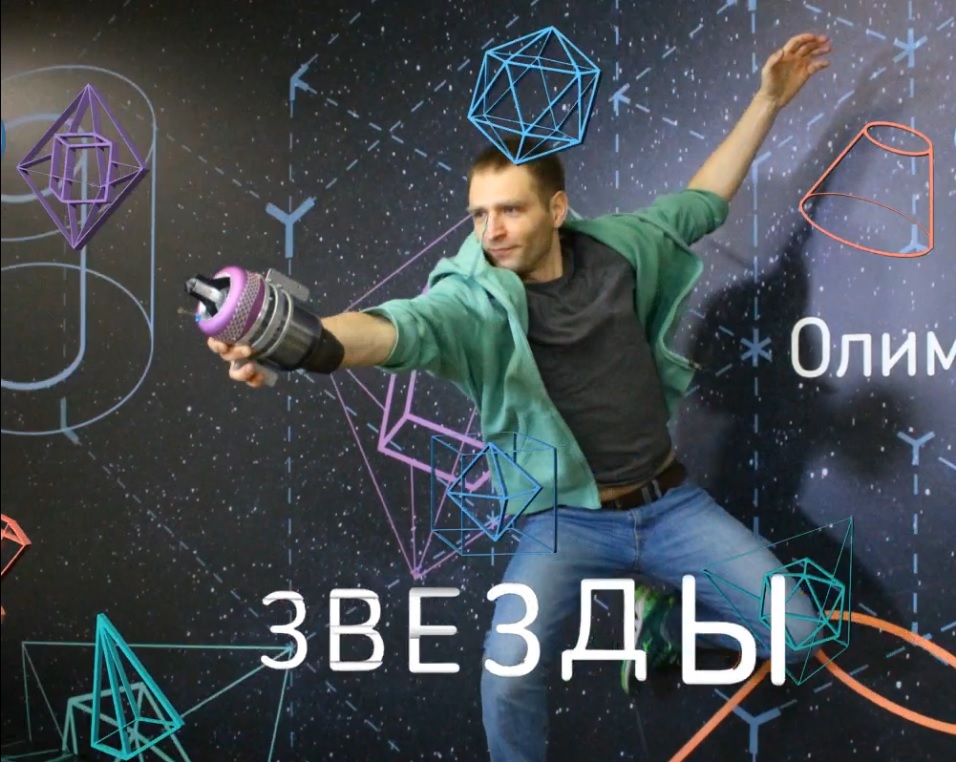
Source: https://habr.com/ru/post/411027/
All Articles